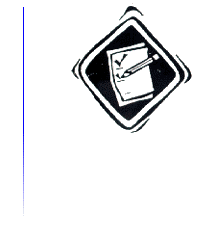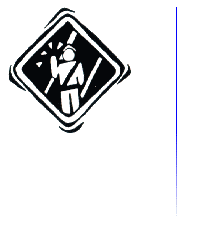Pedestrian Safety Roadmap
& Resource Catalog
The Pedestrian Safety
Roadmap is divided into six sections:
- Making a Commitment: Motivate key decision-makers to take
action in making your community safer and more walkable.
- Getting Organized: Establish a formal Coordinating
Committee and announce the program to the general public.
- Gathering Data: Compile statistics to define the pedestrian
safety problems facing your community.
- Developing a Plan: Define communities priorities and
specify action to be taken in support of the program goals.
- Implementing Your Program: Take action and keep the
media informed about your activities.
- Evaluation & Feedback: Figure out what works and
doesn't work and make the necessary adjustments to the program.
Table of Contents
 |
Making a Commitment
This is the first and hardest stage.
You know you are done when you have convinced local decision-makers to take what actions
are needed to make your community safer and more walkable.
Activities:
 |
Create Awareness of Pedestrian Problems |
 |
Determine Level of Interest in Community |
 |
Establish Steering Committee |
 |
Motivate Key Decision-Makers |
|
Getting Organized
During this stage you are formalizing the commitment to deal with pedestrian safety. The
end of this stage is marked by an announcement to the media that an official Coordinating
Committee has been established to address the concerns of pedestrians.
Activities:
 |
Establish Formal Coordinating Committee |
 |
Recruit Members and Obtain Letters of Commitment |
 |
Draft Community Vision Statement |
 |
Announce Program to Public |
|
 |
Developing A Plan
Using the information you obtain about current conditions, and the vision you have
established for the future, the Coordinating Committee needs to determine what the
community priorities are, and what actions need to be taken in order to accomplish these
goals. It is important to plan carefully but you should not spend too much time and energy
on planning. Your focus should always be on making changes, not just planning changes.
This stage is ended when you have identified and acquired the resources you will need to
implement your action plan.
Activities:
 |
Establish Program Priorities for Safety & Walkability |
 |
Set Goals and Objectives |
 |
Establish Sub-Committees or Teams |
 |
Provide Training as Needed for Team Members |
 |
Develop Action Plans |
 |
Determine Resource Requirements |
 |
Secure Necessary Resources |
|
 |
 |
Implementing Your
Program This is the stage towards which you have been working all along. During this
stage your community program will be improving pedestrian facilities, teaching children
how to cross the street, enforcing the traffic safety laws, and encouraging the public to
get out and walk. At the same time, you should also be keeping the media informed about
everything that is happening, so that the community at-large becomes more aware of the
importance of walking.
Activities:
 |
Conduct Program Kick-off Media Event |
 |
Implement Facilities Improvement Program |
 |
Implement Public Information Program |
 |
Implement Traffic Safety Education Program |
 |
Implement Pedestrian Safety Enforcement Program |
 |
Implement Walking Encouragement Program |
 |
Update Policies, Ordinances, and Standards |
|
Evaluation &
Feedback While evaluation frequently shows up as the last stage of program
development, it must be considered from the very beginning. As you establish your goal and
objectives, you must decide on the measures you will use to assess your success. While you
are implementing your program, you must seek feedback from the people affected to
determine how it is working. And most importantly, you must use the information you obtain
to make adjustments to the programs in progress, and in your plans for the next stages.
Activities:
 |
Determine Performance Measures |
 |
Monitor Pedestrian Crash Data |
 |
Conduct Opinion Polls |
 |
Solicit Citizen Feedback at Public Meetings |
 |
Document what has been done and what is accomplished |
 |
Report Results to Media |
 |
Make Adjustments to Phase I Implementation and Phase II Plans |
|
 |
[ Home
Page ] [ Safety Tools ] [ Pedestrian Update ] [ Roadshow
Schedule ] [ Talk ]
[ Links ]
 U.S.
Department of Transportation
U.S.
Department of Transportation
Federal Highway Administration

![]()
![]()
![]()
![]()
![]()
![]()
![]()
![]()


![]()
![]()
![]()
![]()
![]()
![]()
![]()
![]()
![]()
![]()
![]()
![]()
![]()
![]()
![]()
![]()


![]()
![]()
![]()
![]()
![]()
![]()
![]()
![]()
![]()
![]()
![]()
![]()
![]()
![]()

![]() U.S.
Department of Transportation
U.S.
Department of Transportation